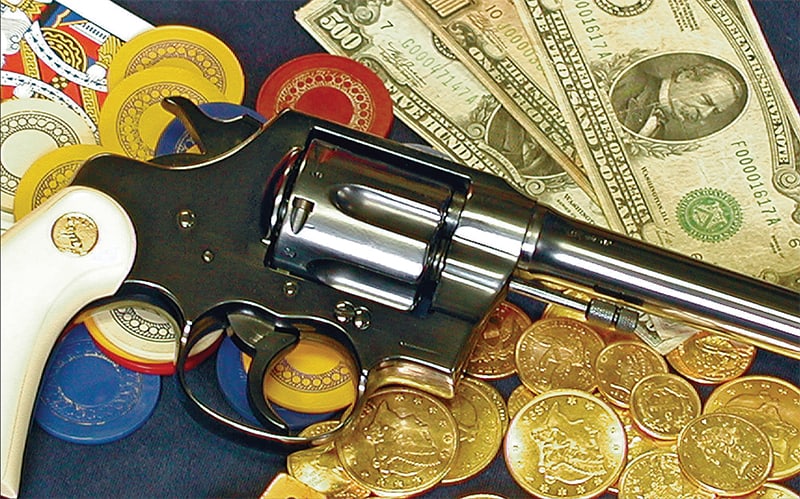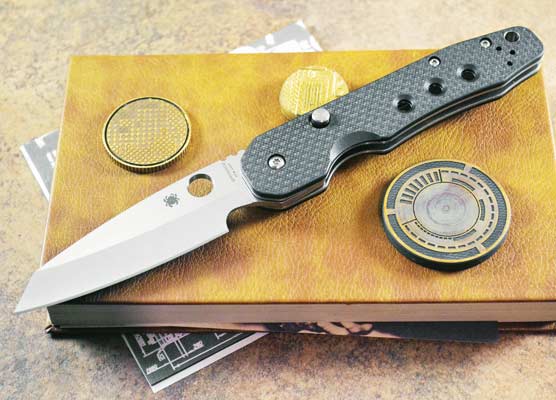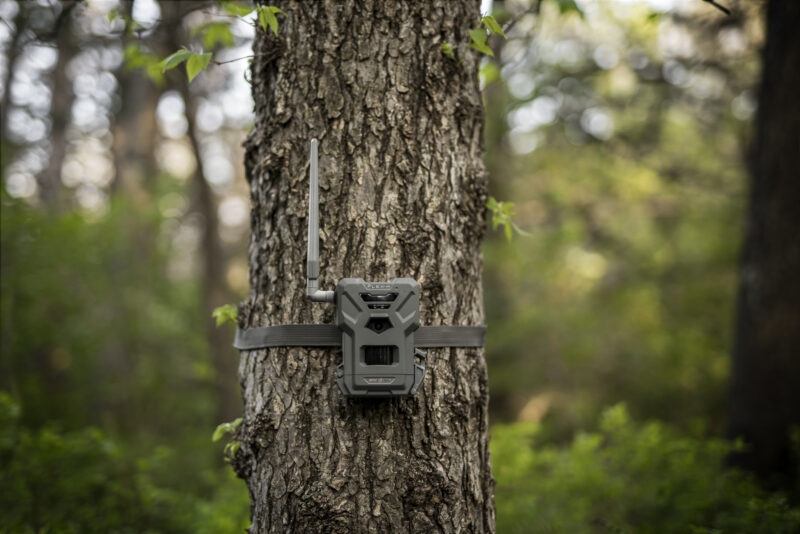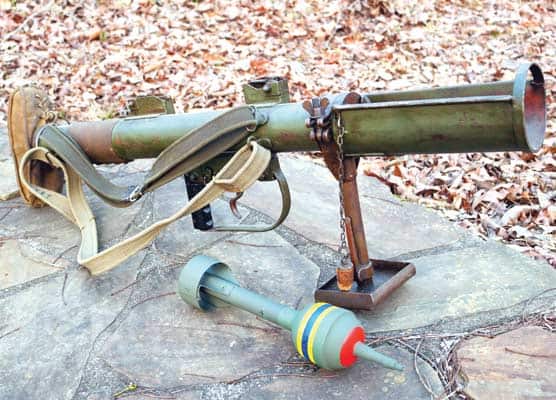Colt's New Service
Big, Bold And Beautiful
Here I am, a grown man 40 years old, I’ve got a wife, daughter, a really fat Chocolate Lab, car payment, huge mortgage and all the trappings going along with being grown up — and I felt just like a five year old kid caught with both hands in the cookie jar.
“What’s that sticking out of your shirt boy,” said a familiar voice. Glancing down, I saw the butt of the Colt New Service sticking out between the buttons of my shirt. “Uh, nothing,” I replied. Boy, that was a smart thing to say, I even sounded like I was five. Dad shot me one of those “Dad” looks, reached down and yanked the big Colt from my pants. “Whatcha’ planning on doing with this old gun?” Well, let’s see if I can come up with a better, more mature sounding answer this time. “Uh, nothing,” was all I could think to say. Besides, if he knew my real intentions I’d probably still be wearing a fat knot on my head.
Raw-Boned and Sexy
No other big bore double action sixgun has ever intrigued and fascinated my narrow little mind quite like Colt’s big New Service revolver. During its 1898 to 1944 production run, its been called everything from raw-boned ugly, to gracefully sexy. As is often the case, the truth lies somewhere in between. Military examples, with their plain walnut grips and dull finish, are about as raw-boned as it gets. On the other hand, a commercial model sporting a blued or nickel finish so deep you can see your future in it, along with factory ivory or pearl stocks, is clearly one of the sexiest handguns ever created.
Whether you consider it gruesome or gorgeous, it was without doubt one of the toughest double action sixguns on the market. Tank-tough isn’t far off the mark when describing its ability to absorb abusive treatment, although John Wayne or Clint Eastwood-tough might be a better description. But what it really is, is plain old mother-in-law tough, and it doesn’t get any tougher than that!
At one time or another in its 46-year production run, this formidable holster gun was offered in the most effective handgun cartridges of the day; which included everything from .38 Special to .476 Eley, with .357 Magnum, .38-40, .44-40, .44 Russian, .44 Special, .45 ACP, .45 Colt, .450 Eley and .455 Eley in between. Over the years, Colt’s New Service was offered with 2″, 4″, 4.5″, 5″, 5.5″, 6″, and 7.5″ barrels. Of these, the most commonly encountered barrel length is 5.5″, which seems to be the best all-around length anyway.
Although the legendary Colt 1911 was the standard handgun issued to America’s doughboys during World War I, Colt also produced some 151,700 New Service sixguns in the same caliber as a “substitute standard” due to the shortage of John Browning’s most famous fighting tool. It was a very popular substitute, thanks in no small part to America’s love affair with sixguns and lack of experience with the new-fangled auto.
Beginning of a Legacy
The first 50,000 or so “military” versions had chambers bored straight through and relied on steel half-moon clips to function properly. Subsequent models featured chambers bored with a “step” or “shoulder,” so the rimless .45 ACP round could headspace on the case’s mouth, and could be fired with or without half moon clips. After the war had ended, many soldiers refused to give up their “substitute standards” and carried them home, where they continued serving their owners as house companions, hunting partners and fishing buddies. Some, who gave up a life in law enforcement to serve their country, returned home, dusted off their badges, placed them over their heart, and slid their trusted New Service into a duty holster, where it continued to serve and protect.
By 1944, more than 356,000 Colt New Service revolvers had been produced in a variety of calibers, the majority of which were reamed to .45 ACP, thanks to its popularity with Uncle Sam’s street and trench-wise soldiers. Commercially, the .45 Colt was by far the most popular caliber chambered in the big sixgun, and clearly the top choice of discriminating shooters. Several top law enforcement agencies like the Border Patrol, The Royal Canadian Mounted Police, New York State Police and the Texas Highway Patrol, considered the New Service one of the best all-around handguns ever to grace a Sam Browne belt. And by all accounts, this sturdy six-gun served them well.
Target Shooters Too?
Although the Colt New Service was generally considered a fighting-man’s sixgun, serious target shooters were quick to notice it was plenty accurate for taking home colorful ribbons and shiny trophies. Colt wasn’t quite as fast on the draw, but their two target offerings were well worth the wait. The first was simply called the New Service Target. It featured a rear sight adjustable for windage and a front sight blade adjustable for elevation, standard barrel length was 7.5″, and stocks were checkered walnut. Later, Colt offered the same target sixgun with identical features, but it bore the name Shooting Master, instead of New Service Target. Barrel length was shortened to 6″ and the grip frame was slightly rounded at the bottom in an effort to make the gun more user friendly to those with smaller hands.
With the obligatory, albeit brief history trivia of the Colt New Service concluded, I’m ready to finish the story about “my” New Service, the one I attempted to liberate from Dad before I was collared, fined and sentenced to a hot summer of grass mowing, weed eating and car washing. I’ve been liberating Dad’s firearms for most of my 40 years, generally without any repercussions, so when I decided to give the old New Service a test ride I did so with full intentions of returning it in a year or so, depending on how well it shot.
The Gun In Question
There’s nothing out of the ordinary or collectible about this particular sixgun, in fact, having been re-blued at some point in its life, collector value is virtually nil, however, shooter value is an altogether different proposition. Cosmetically speaking, it sports a 7.5″ fixed sight blued barrel, lanyard ring and custom stocks crafted from genuine hard plastic with Colt medallions embedded slightly askew — and it’s chambered for .45 Colt.
Internally speaking, all the parts appear to be new, hmm; maybe I’m on to something here. The bore is mirror bright and shows no evidence of wear of any kind. The chambers are clean and shiny, and the action is smooth and heavy, just like every one I’ve encountered. After examining the New Service, I came to the conclusion it had spent most of its life tucked away in a holster, forgotten and unused, where it acquired some light pitting. Sometime later its previous owner had it re-blued, Dad somehow ended up with it, and now it was mine, sort of.
Rummaging through the old ammo chest, I came up with an assortment of factory .45 Colt ammo from Black Hills, Hornady, Winchester and Speer, mostly “cowboy” stuff, with the exception of the Speer load. Retiring to the loading bench, I assembled a few favorite handloads using several varieties of commercially cast bullets weighing between 250 and 255 grains, and one home brewed cast bullet featuring straight wheel weights and RCBS’ 45-255-SWC mold, sized to .454. The latter drops from my mold at 265 grains.
Traditionally, Alliant Unique has been the top powder choice for reloading the big .45 Colt case and has long been a particular favorite of mine for delivering good velocities and superb accuracy. For general purpose loads, which is all I desired for the old New Service, eight to nine grains of Alliant Unique and a quality 250 grain (or so) bullet is all that’s needed, producing around 850 to 950 feet per second or so. I loaded up several hundred rounds of each, grabbed the factory ammo and headed for the range.
Shooting Extravaganza
It’s been my good fortune to own and shoot perhaps a dozen or so Colt New Service sixguns over the years, the majority of which were chambered in .45 Colt. Without exception, they were all very accurate guns, with some delivering precision bordering on phenomenal. My newly-liberated New Service’s accuracy fell somewhere in-between. Winchester’s 255 grain lead soft point was the most precise factory load with a five group average of just under 2″ at 25 yards. The Hornady, Speer and Black Hills offerings were nearly as accurate, collectively averaging slightly over 2″. Loads featuring a variety of commercially cast bullets were hard put to stay much under 3″, but when I switched to my own cast pills, things began to look up considerably. Using both 8.5 and 9 grains of Alliant Unique, groups ran between 1.25″ and 1.5″ at 25 yards, with velocities averaging 901 and 946 feet respectively, making this one fine general purpose load.
For many years locating a Colt New Service revolver was as easy as dropping by the nearest gun shop. If you wanted to buy it, you simply dropped a couple of century notes on the counter, scooped up the sixgun and left. As Archie Bunker says, “Those were the days.” Unfortunately, collectors have driven the price of New Services through the roof and it appears $200 New Services have followed the dinosaurs into extinction. Still, if you want a high quality, classic big bore holster gun, a Colt New Service is pretty tough to beat. And they’re just as gracefully-sexy today as they were raw-boned ugly 50 years ago. Oops, gotta go — Dad’s not looking and I just spotted a nice Smith & Wesson. Think I’ll go liberate it real quick. I’ll let you know how it shoots later.








